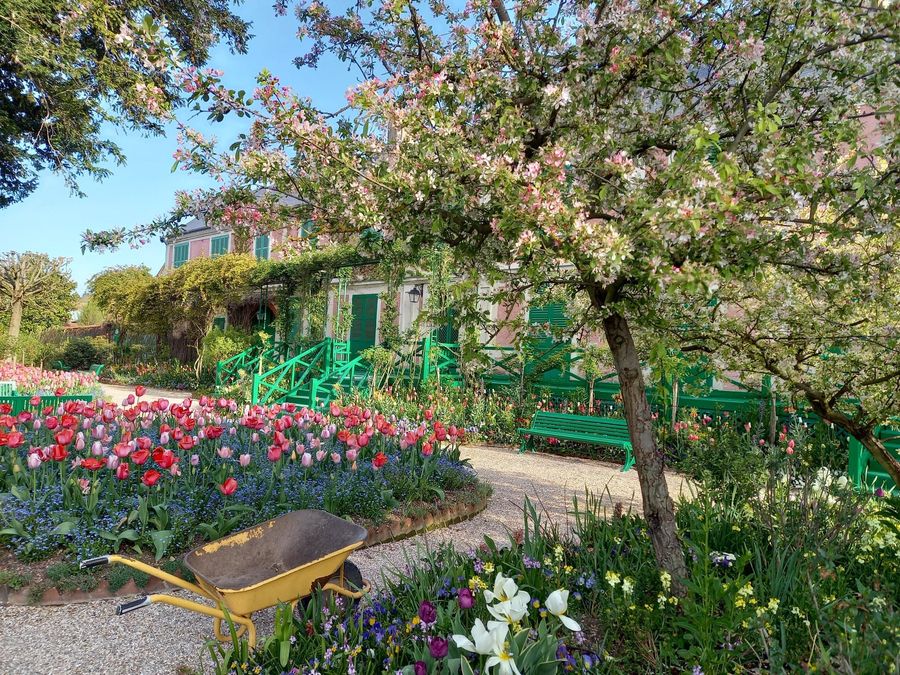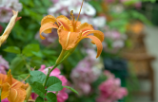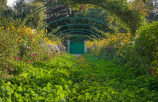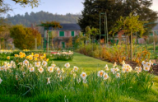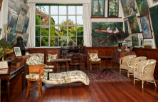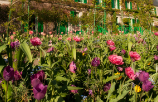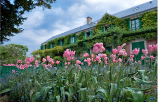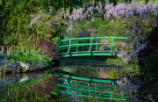Giverny
Pink and blue!
As April dawned, pink tulips and blue forget-me-nots started blooming in the flower beds beside Claude Monet’s house. Let’s take a look at that amazing sight.
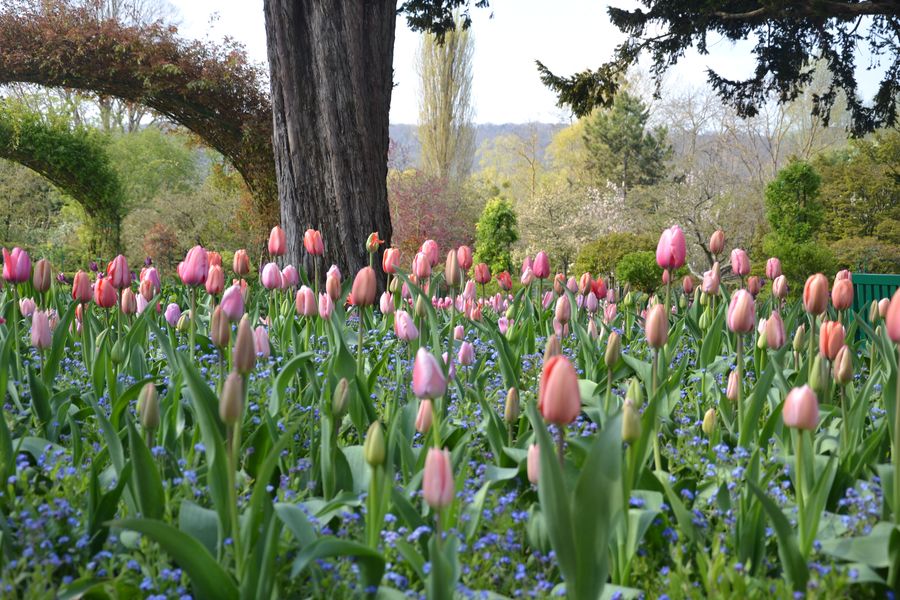
Immortalised by visitors the world over, this sweet yet stunning spectacle has forged the reputation of Claude Monet’s gardens. However, bringing this flower bed back to life during the restoration phase and making it worthy of an impressionist painting was a huge undertaking. “We initially planted red daisies here, along with tulips. We thought that was right. But, at the official opening in June 1980, Mr de Vilmorin told us we were mistaken. He had visited Claude Monet at Giverny and he quietly mentioned to us that there should be a mixture of tulips and forget-me-nots!
This balanced, colourful flower bed closely resembles the estate’s master. In fact, the ‘Genius of Giverny’ worshipped tulips! In early May 1886, Claude Monet discovered the flamboyant stripes of colourful tulip fields between Leiden and Haarlem in Holland. His artist’s eye, ever in search of new sights, drank in these surprising, colourful carpets of infinite different shades, stretching to the horizon. Upon his return, he reserved a prime position for tulips in his impressionist’s haven.
Pink is a key element of the flowerbed and this colour left a significant mark on Claude Monet’s art. From ‘Winter sun, Lavacourt’ (1879-1880) bathed in a calm pink light to ‘Water Lily Pond, Pink Harmony’ (1900) and ‘Poplars, Three Pink Trees in Autumn’ (1891), this colour occupied a key spot on his palette. Wasn’t one of his last paintings called ‘The House Among the Roses’ (1925)? And when he discovered the Moreno de Bordighera gardens soon after moving to Giverny, he grasped the full pictorial power of this colour. “An extraordinary, indescribable pink reigns here,” the artist wrote in 1884.
The tulips are joined by forget-me-nots in a range of bold blue shades. Because Claude Monet also loved blue: “In spring, the artist became passionate about blue after having seen the countless violas that were sprinkled around the Bordighera gardens and countryside at that time,” explains our Deputy Head Gardener, Rémi Lecoutre. Louis Aragon, a frequent visitor to Claude Monet at Giverny, recounted that passion in his novel ‘Aurélien’ (1944): “She saw the blue flowers. At their feet, freshly turned soil. Blue flowers everywhere. The little path to the house. The bright grass and other blue flowers. […].” This passion seems to have reached its peak in 1900 because, when Claude Monet left for London, he instructed his head gardener Félix Breuil to plant the Clos Normand so that in spring it would be blue, cobalt, royal blue, azure and cerulean, with all shades of iris, pansies, sage, forget-me-nots, hyacinths and more!
Today, thanks to the expert hands of our gardeners led by Jean-Marie Avisard, this flower bed is recreated every year: “For the tulips, we mix three categories in autumn: the ‘early’, ‘slightly early’ and ‘late’ flowering varieties,” explained Gilbert Vahé in his book, ‘Le jardin de Monet à Giverny – Histoire d’une renaissance’ (Monet’s Garden at Giverny – A story of revival) (Editions Gourcuff/Gradenigo). “This ensures that flowers are always blooming for almost a month. At Clos Normand pink reigns supreme, with 2,000 mixed bulbs creating a random distribution of colour tones! The Peerless Pink and Anne-Clair Triumph medium-stem tulips (250 of each) sit alongside 300 Elizabeth Arden Darwin long-stem hybrids. Some 300 Pink Diamonds mix with 400 Queen of Bartigons Darwins, which are then replaced by 300 late-flowering Rosy Wings, marking the end of the show. At their feet is the bright blue carpet of tiny Alpine Forget-me-nots, transplanted in November, and compact clumps of pink Flon carnations.”
See the world through rose- (or blue-) tinted glasses!
